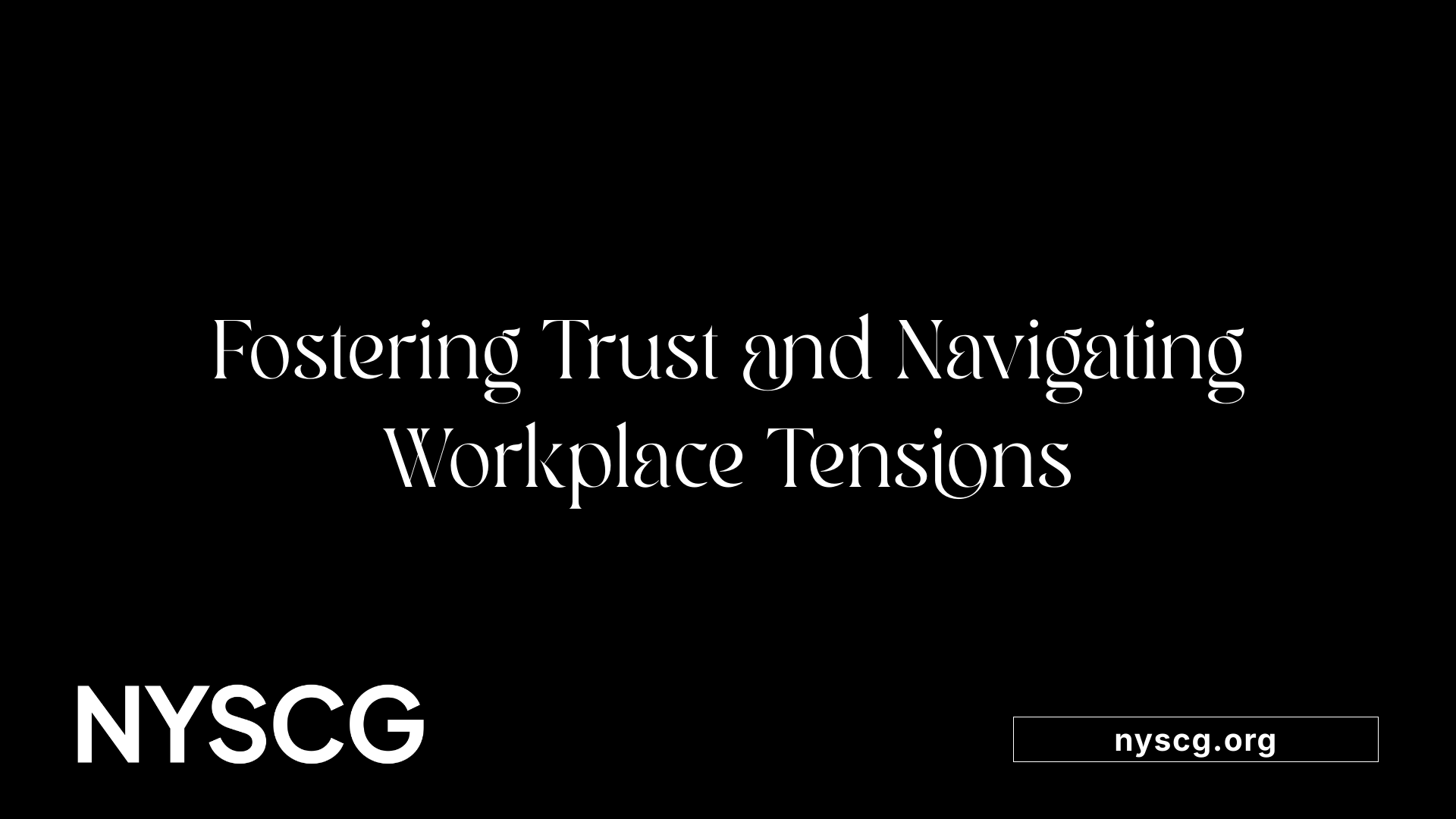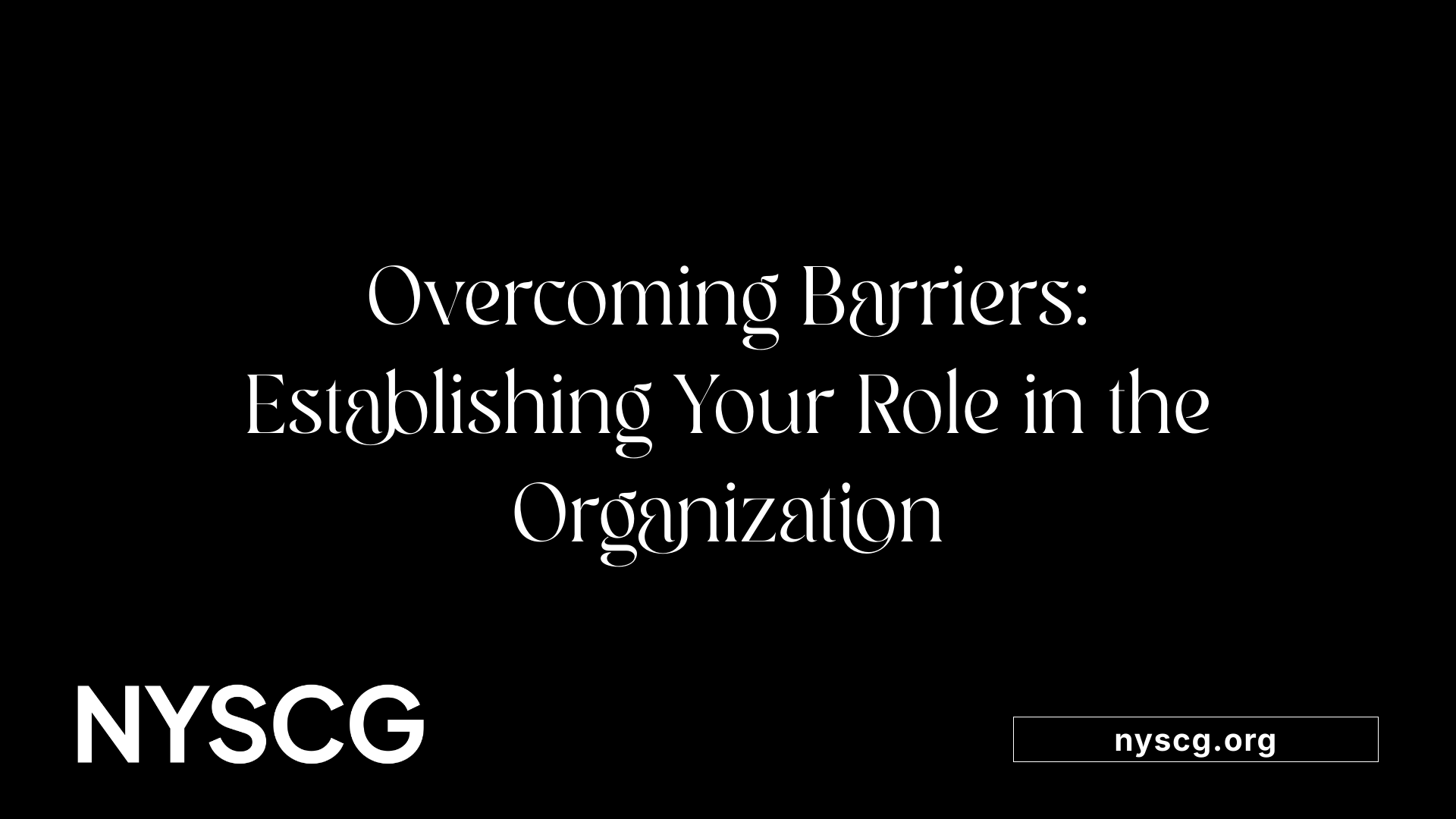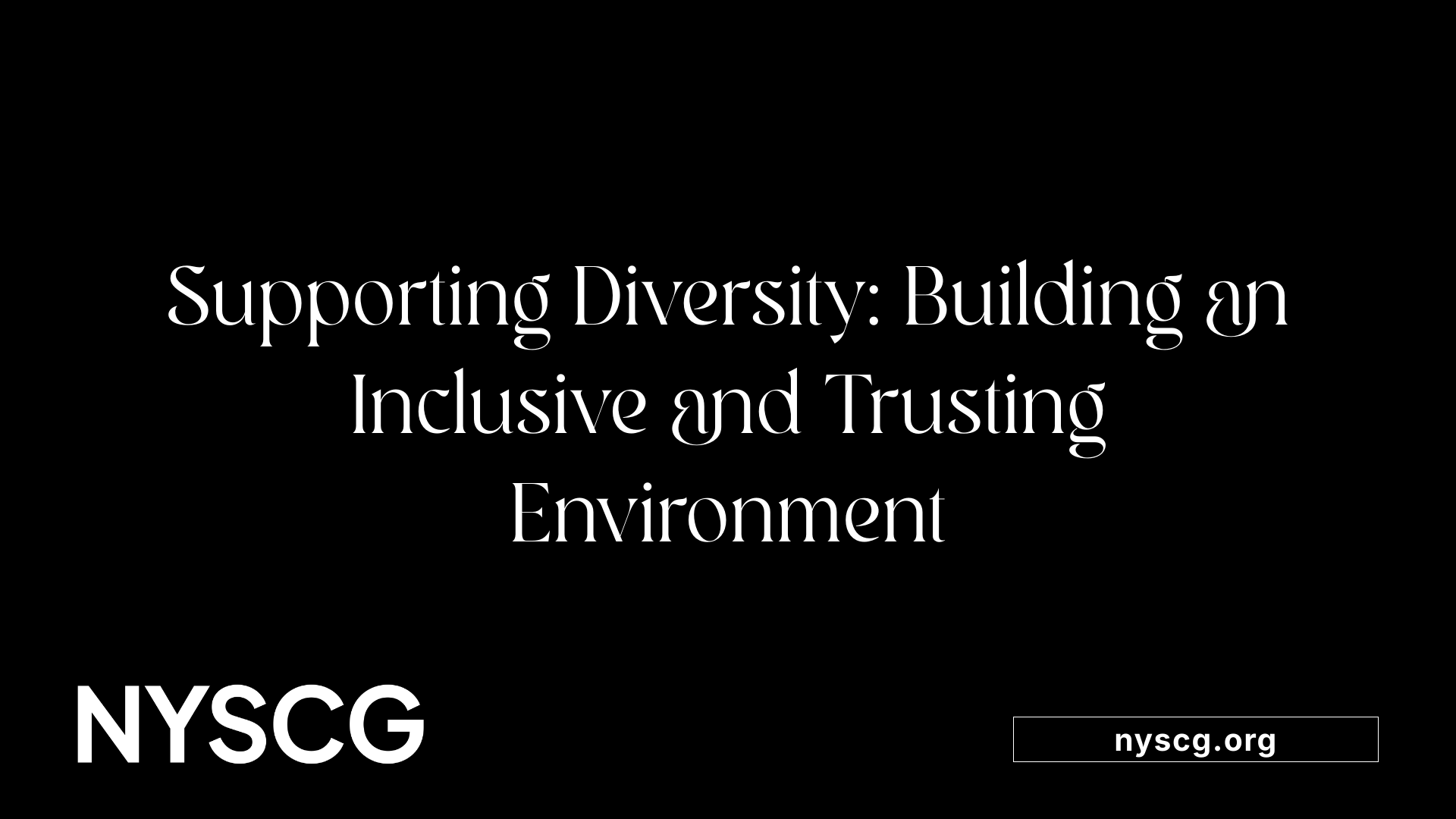Common Challenges New Chaplains Face in the Workplace


Embarking on a career as a workplace chaplain involves navigating a multifaceted environment filled with personal, organizational, and societal challenges. This article explores the common hurdles faced by new chaplains, from establishing their role and gaining acceptance to managing complex interpersonal dynamics and evolving responsibilities.

New chaplains often encounter several interpersonal issues as they establish their roles within the workplace. One of the primary challenges is building trust with employees and management. Gaining credibility requires consistent demonstration of professionalism, active listening, and cultural sensitivity.
Chaplains work with employees from diverse backgrounds, beliefs, and life experiences, which makes handling differing belief systems complex. They must respect each individual's spiritual perspective while maintaining neutrality, especially when personal beliefs vary widely.
Maintaining confidentiality is crucial for chaplains, but it can also be a significant challenge. Employees need to feel secure that their personal struggles—whether health crises, family issues, or workplace conflicts—are kept private. This trust in confidentiality encourages employees to seek support without fear of judgment or repercussions.
Workplace conflicts and tensions are common, and chaplains often operate as neutral mediators. They help address interpersonal issues, manage conflicts, and contribute to a more harmonious environment. However, they must do so carefully, avoiding taking sides or becoming entangled in workplace politics.
Balancing neutrality with genuine support is delicate. Chaplains aim to provide compassionate presence and guidance without imposing beliefs or influencing workplace dynamics. Building authentic relationships involves empathy, patience, and awareness of individual differences.
Resistance or discomfort from employees can also pose hurdles. Some staff may be hesitant to approach chaplains due to stigma surrounding mental health or privacy concerns. Overcoming these barriers requires chaplains to be approachable and adaptable, creating a safe space for personal reflection.
Ultimately, the role of a workplace chaplain is to foster trust, facilitate open communication, and help manage conflicts—contributing positively to overall workplace culture and employee wellbeing.

New workplace chaplains often face several challenges when trying to establish their role within an organization. One of the primary issues is role ambiguity, as colleagues and management might not fully understand the scope of spiritual support services. This lack of clarity can lead to hesitation or misunderstanding about the chaplain’s purpose.
Gaining recognition from staff is another hurdle. Many employees and even some managers may be unfamiliar with the benefits of spiritual care or may view it with skepticism, especially if there are cultural norms or workplace policies that do not traditionally include such support.
Building credibility takes time. Chaplains need to demonstrate their value by effectively addressing employees’ personal challenges—like mental health struggles, relationship issues, or crises—while respecting confidentiality and workplace boundaries. Establishing trust often involves careful navigation of organizational culture and aligning their role with the company’s wellness goals.
In addition, chaplains may encounter resistance rooted in stigma around religious or spiritual support. Some workplace environments might prioritize purely clinical or managerial approaches to wellbeing, making it necessary for chaplains to balance sensitivity and professionalism.
Furthermore, addressing diverse issues such as addiction, depression, or domestic violence requires specialized skills and a nuanced approach. Often, chaplains work alongside Employee Assistance Programs (EAPs) and other mental health resources, which can sometimes lead to role overlap or confusion in who handles which issues.
Effective integration depends on proactive communication. Chaplains should network with key stakeholders—HR teams, healthcare professionals, and leadership—to raise awareness about the benefits of holistic wellbeing support.
Setting clear boundaries and defining their scope of practice helps prevent misunderstandings. For example, clarifying that chaplains do not replace mental health professionals but complement their work through spiritual reflection and emotional support.
To address these obstacles, new chaplains can focus on transparent dialogue about their role, community outreach within the organization, and ongoing evaluation of their impact. Demonstrating positive outcomes, such as improved employee engagement, reduced turnover, or better stress management, can further solidify their position.
By fostering an environment of openness and trust, chaplains can gradually integrate into the workplace culture, helping create a supportive atmosphere where emotional and spiritual wellbeing are recognized as vital to overall health.

New chaplains often face multiple hurdles when establishing themselves within healthcare or workplace environments. One of the main challenges is defining a clear professional identity that distinguishes their role from other professionals like clergy, psychologists, or social workers.
Many organizations initially perceive chaplains narrowly, often viewing them as religious figures rather than holistic care providers. This misconception can create barriers to acceptance and collaboration. To overcome this, new chaplains need to actively profile their skills and demonstrate the value they bring to the team through networking and interprofessional dialogue.
Building trust with colleagues involves clarifying their role in supporting not only employees or patients but also their families. Recognizing their position's vulnerable and dependent nature, especially in organizational settings, is vital.
Adding to these challenges is the limited amount of research and concrete evidence supporting chaplaincy's benefits, which can make organizational buy-in more difficult. Organizational barriers, such as scope restrictions or lack of awareness, may also hinder integration.
Despite these initial difficulties, many chaplains see expanding their responsibilities as an opportunity. They contribute to ethical conversations, staff well-being initiatives, and training programs, all aimed at fostering a holistic approach to health and work environment culture.
In summary, successful role development for new chaplains hinges on clear communication, advocacy, and demonstrating how their services complement other organizational functions, ultimately enriching overall wellbeing and ethical practice.
| Aspect | Challenge | Solution | Additional Notes |
|---|---|---|---|
| Professional Identity | Misconceptions limiting recognition | Profile skills and network | Differentiate from clergy and psychologists |
| Interprofessional Acceptance | Gaining trust among colleagues | Demonstrate holistic value | Collaborate on ethics, well-being |
| Organizational Barriers | Limited research and scope | Show evidence and adaptability | Expand to training and ethical roles |
| Role Expansion | Perceived dependency | Clarify boundaries | Contribute to ethical discussions |
Understanding these factors helps new chaplains navigate their professional landscape more effectively, ensuring they become integral parts of organizational wellbeing efforts.

Supporting new chaplains in the workplace involves navigating a range of complex challenges. These professionals are tasked with understanding a wide array of employee needs, which can include spiritual, emotional, and practical concerns. Building trust is essential, and this requires maintaining strict confidentiality, especially when handling sensitive personal information.
New chaplains often find it difficult to manage sensitive issues discreetly while fostering open communication. Handling workplace relationships, conflicts, and hierarchies can add complexity to their role. They must navigate differing perspectives and organizational structures without overstepping boundaries.
A key challenge is balancing support for employees facing personal crises, mental health struggles, and work-related issues such as harassment or organizational changes. These situations demand a delicate approach that respects individual privacy while promoting a safe, inclusive environment.
Creating a space where employees feel comfortable sharing their concerns is vital. This involves developing skills in active listening, empathy, and cultural competence. Supporting mental health and well-being, especially in diverse work environments, requires chaplains to be adaptable and sensitive to various backgrounds.
In summary, new chaplains are challenged to juggle confidentiality, workplace relationships, and multiple layers of personal and organizational issues. Their ability to navigate these challenges effectively determines their success in fostering a culture of trust and inclusivity.
 New chaplains face a wide range of educational and training challenges as they prepare to serve diverse populations. Developing a standardized and comprehensive curriculum is essential to equip them with the necessary skills for real-world roles.
New chaplains face a wide range of educational and training challenges as they prepare to serve diverse populations. Developing a standardized and comprehensive curriculum is essential to equip them with the necessary skills for real-world roles.
A major focus is on cultural competency. Chaplains must learn to work effectively with individuals of various faith backgrounds or no faith at all. This involves understanding different belief systems, respecting personal spiritual journeys, and providing inclusive support that honors each person's unique perspective.
The increasing reliance on technology for remote care requires chaplains to acquire new technological skills. During the COVID-19 pandemic, remote spiritual care became vital, prompting the need for training in virtual communication platforms, confidentiality protocols, and ethical considerations for digital interactions.
Crisis response training is another critical area. Chaplains must be prepared to handle emergencies, such as health crises, accidents, or traumatic events, often while working with protective equipment or in hazardous environments. This training includes developing skills in crisis intervention, safety protocols, and emotional first aid.
Effective collaboration within interdisciplinary teams enhances holistic care. New chaplains learn to work alongside healthcare professionals, social workers, and mental health specialists to address complex social and emotional needs.
Moreover, education on conducting spiritual assessments, advocating for spiritual care, and managing difficult conversations around end-of-life issues or advance directives is vital. These skills help chaplains navigate ethically challenging situations and uphold patient dignity.
Ongoing supervision and continuing education remain essential to help chaplains adapt to changing demands and expand their competencies. As the landscape of spiritual care evolves, so does the need for advocacy within healthcare systems to recognize the role of chaplains.
In summary, training new chaplains involves a multifaceted approach—covering cultural awareness, technological proficiency, crisis management, and interdisciplinary teamwork—ensuring they are well-equipped to address the spiritual and emotional needs of diverse individuals in complex settings.
The role of workplace chaplains has significantly broadened over time. Originally focused on providing religious support, they now serve as holistic caregivers for employee well-being. Their responsibilities include addressing emotional and mental health issues, mediating conflicts, offering grief and trauma counseling, and actively promoting diversity and inclusion.
This transformation aligns with organizational goals to foster healthy, supportive environments that respect individual differences. As a result, chaplains increasingly work in secular settings, ensuring their support is accessible and respectful of all employees, regardless of faith background.
However, this evolution brings several challenges. Enhancing cultural competency is crucial, as chaplains must navigate diverse beliefs and non-religious perspectives. They need to adopt non-invasive, non-evangelical approaches that prioritize listening and support rather than proselytizing.
Legal and ethical boundaries also become more prominent. Maintaining confidentiality, respecting employee autonomy, and understanding legal issues related to mental health and workplace interventions are vital. Chaplains must stay current with employment laws and organizational policies to avoid overstepping.
Technology plays a growing role in this evolution. Remote support tools like virtual meetings and mental health apps expand accessibility, especially in large or dispersed organizations. This use of technology requires chaplains to develop new skills and adapt their practices accordingly.
Overall, evolving roles demand that chaplains balance their spiritual duties with secular sensitivities, maintaining trust and credibility among diverse workforces. Continuous training in cultural competence, ethical standards, and technological proficiency is essential for effective adaptation to these expanded responsibilities.
Overcoming the challenges faced by new workplace chaplains requires strategic adaptation, continuous learning, and active engagement within their organizational culture. By developing cultural competence, building trust, clarifying roles, and embracing evolving responsibilities, chaplains can significantly influence workplace environments to support mental health, diversity, and holistic well-being. The journey from newcomer to respected professional involves navigating complex organizational dynamics but ultimately leads to a vital contribution to employee support and organizational culture.
All you need is the will to make the world a better place.
New York State chaplain group inc. is a tax deductible organization with a federal tax Id number 92-383-4921